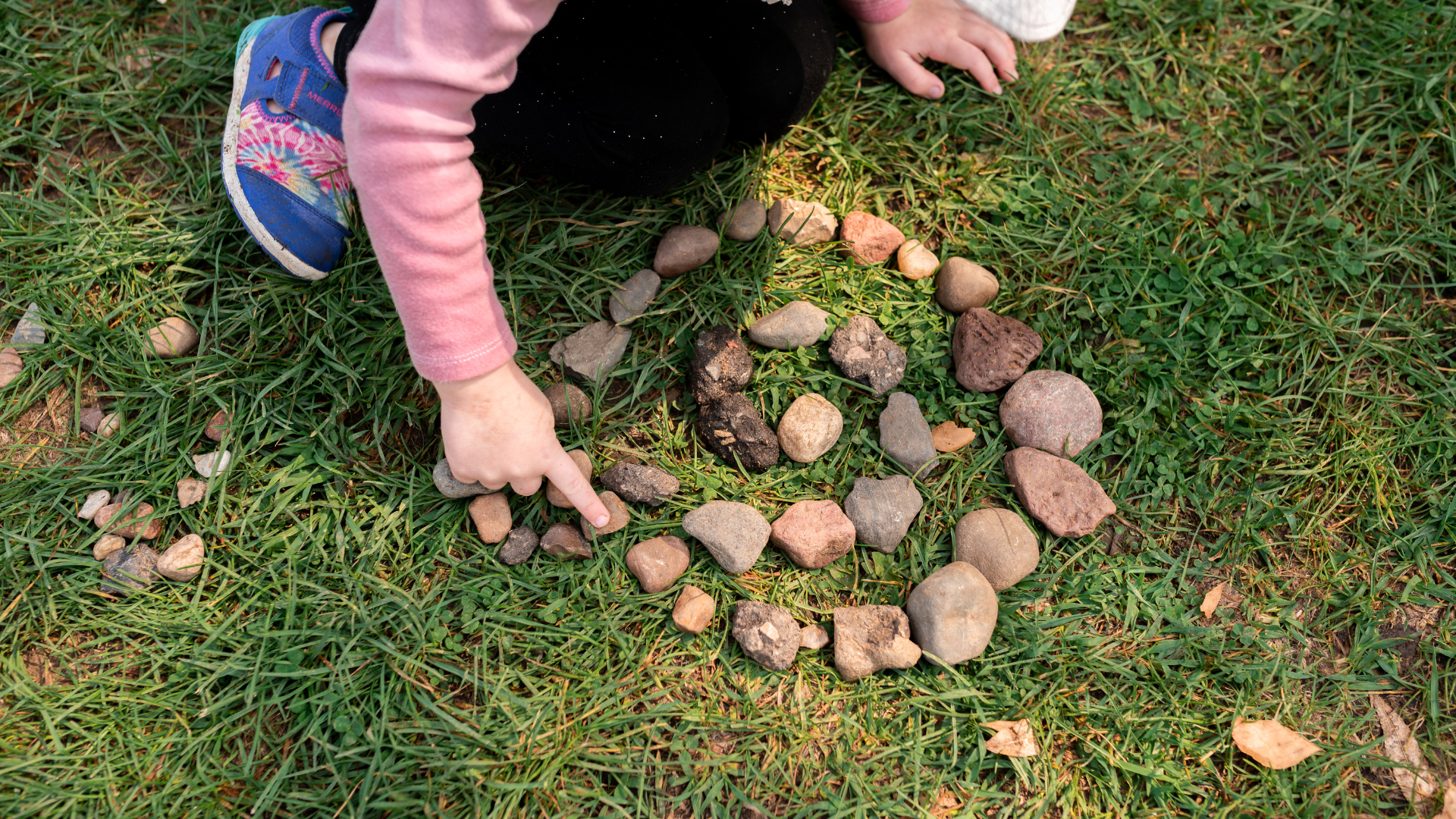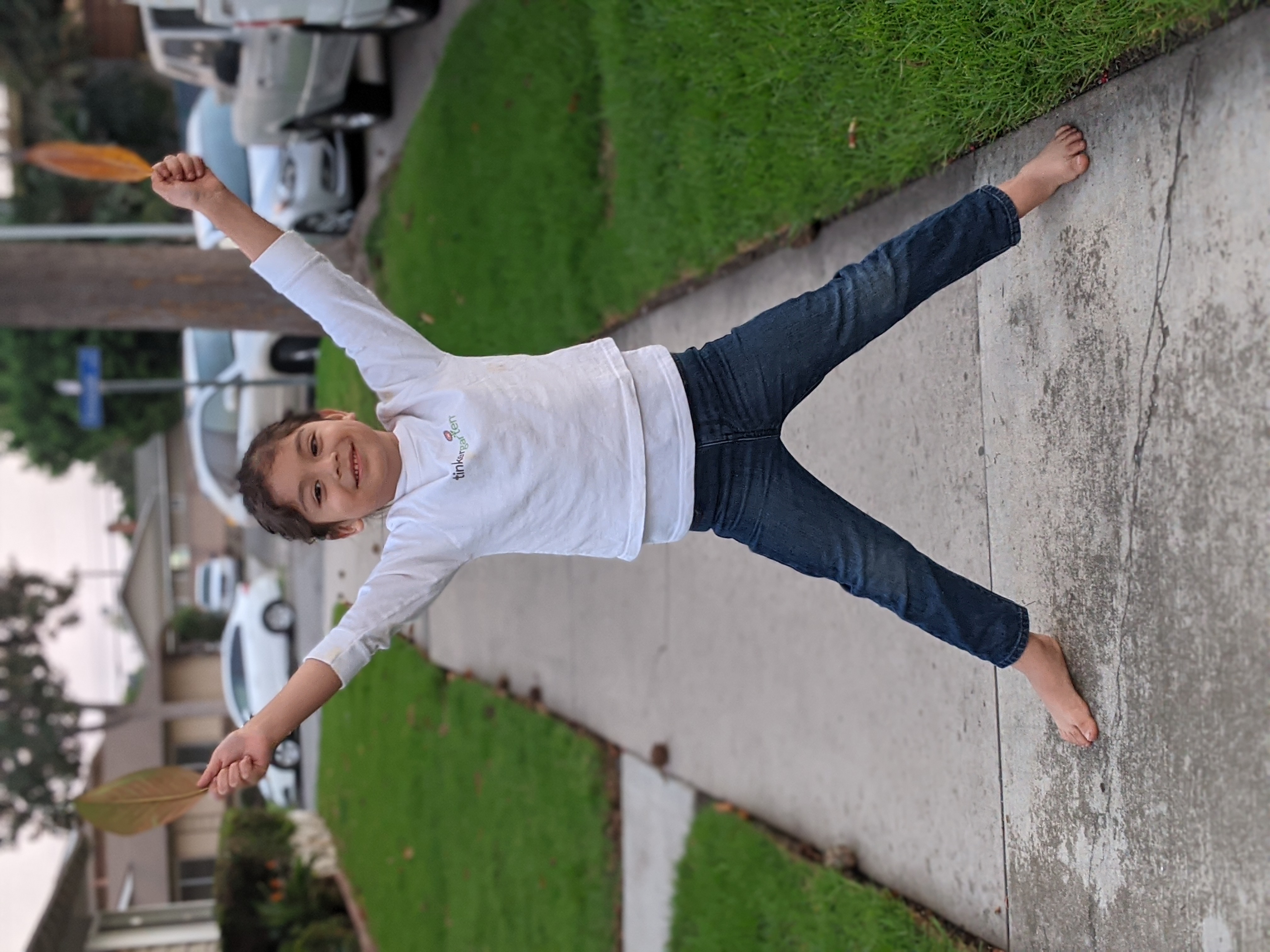No matter what we’ve each got on our plates, we've all faced wild, new challenges in the past few years. And, no matter what "schooling" looks like for your family, fall brings changes to routines, and that always brings a little stress with it. Changes to our routines, interruptions to our traditions, strain on our social relationships, and the ongoing uncertainty of COVID-19 all add up, for adults and for kids. Whew! Do you feel like you need strategies to help kids (and you) roll with it all? We've got you covered.
Many of us are looking for simple, family-friendly and effective ways to help our kids stay grounded, connected and healthy in body, mind and heart. But how do you teach young children about these lifelong wellness concepts? Though there are many lessons that fall under the wellness umbrella, it can help to focus on three pillars—time outdoors; playful learning; and mindful movement. Here’s why.
Time Outside/Getting our Vitamin "N"
Nature and play lower stress. Children are particularly vulnerable to the impact of stress and stress hormones, and this time is extra stressful on us all. If you can join your kids, your stress will reduce too. When kids get outdoors, they enjoy reduced anxiety and enhanced mood. The same goes for us adults. Outdoor settings also provide kids’ sensory systems with an ideal mix for learning, because the outdoors is both stimulating and calming at the same time.
Science tells us that simply spending more time in natural settings lowers anxiety and promotes physical fitness, in the near and long terms. In fact, studies show even as little as 2 hours per week can give kids (and us) the mental and physical benefits! Plus, nearly all parents agree that our kids are notably calmer after they’ve spent active time outside. Learn more about how time outdoors bolsters wellness, and know that we’ll continue to directly inspire kids to spend time outdoors and interact with nature elements each week.
Want to get a dose of Vitamin N(ature) right away today? Start or end the day with a slow walk around the block, paying extra attention to the sounds, smells and other sensations. Or, try one of the ideas in this list.
Whether or not you can bring kids outdoors to play, you can try gathering some natural objects like stones, sticks or pine cones, then letting kids explore them, incorporate them into their play, make shapes or designs with them. These activities are all wonderfully calming to the body, mind and heart.
Making Sense through Play
How can we teach concepts like joy, gratitude and kindness or strategies for how to take risks, manage disappointment or keep calm to kids ages 2 to 8? Through play—the ideal way for young learners to make sense of their world. For example, with a little expert framing, simple, playful acts can be a gateway to understanding big concepts. For example, teachers can help kids to learn more about kindness as they play with filling and dumping different materials in and out of containers, using that physical experience as a metaphor for how we fill each other up with acts of kindness. Or, we can help kids can learn to focus their minds as they play sound-making games.
Want to try teaching kids these topics on your own? Take an example like gratitude. Teach kids about gratitude as you make a gratitude tree or work together to create a nature thank you card for your local park system. Or check out hundreds of ideas in our DIY activity catalog.
Mindful Movement and Breath
We know that mind and body are closely connected, and when we combine certain movements with intentional thought, we can bring ourselves into the moment, strengthen our bodies and calm our minds.
I’ve taught both my students and my own kids breathing and movement exercises to help them regroup, center and calm themselves down. These movements don’t eliminate the instances of big feelings or frustration—those are an important part of childhood—but they help soften and smooth out the rough moments.
Overall, being able to calm one’s body and mind engenders empowerment and resilience that will remain with kids as they grow. Knowing ways to help kids help themselves regain their calm has made both teaching and mothering smoother, too.
Through metaphors from real life, children bring their imagination and experience into the movement. Moving like animals, plants or natural phenomena also deepens kids’ connection to nature and reminds us all that nature is a source of calm and wellness.
Feeling stressed today? Try moving and breathing like lions to relieve tension and channel inner strength in you and your kids!
Each week this fall, we’ll teach kids new techniques to calm, connect and center their minds and bodies. This will include different ways to use breath, movement and simple thoughts in concert. As always, we'll share some of this in class and we’ll share a wider set of resources, ideas and strategies in caregivers' My Tinkergarten dashboards, so families can choose which resources are a match for them.
No matter how you can do it, head outside, breathe and feel rooted and connected to the earth—we know that will help weather any storm!


